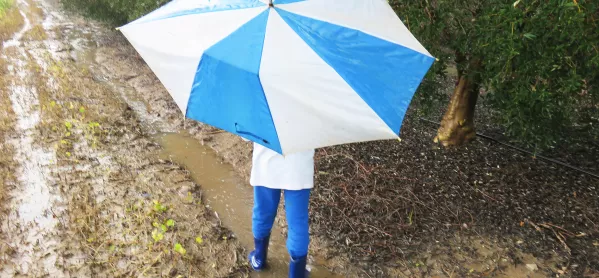Keeping Children Safe in Education: how things may change

Several weeks ago, the Department for Education (DfE) gave rather a low-key launch to a very important “call for evidence” - seeking feedback on the Keeping Children Safe in Education (KCSIE) guidance - which many in education might not have noticed.
However, while this call for evidence stated that there would be no major alterations to this year’s KCSIE document - with only “technical changes” expected - the information received will be used to “provide a more substantively updated document, encompassing wider changes, to be delivered in 2025”.
Looking through the areas of focus in this call for evidence gives a good sense of what the DfE views as the important trends in safeguarding in the coming years - and why it is important that safeguarding teams and other school staff make their views heard.
1. The role of the designated safeguarding lead
The first section of the survey looks at the role of the designated safeguarding lead (DSL), with an acknowledgement that it is becoming increasingly complex and challenging.
It contains questions about whether the definition of the role within KCSIE as it currently exists is still accurate, and what might need to change to make it more relevant and supported within the document.
It is good to see a proper focus on putting in place the right support for those who lead safeguarding in schools, including asking if it would be helpful to provide better online resources to support safeguarding leads, potentially with a series of online instructional videos.
Other questions in this section look at the potential impact of schools having a strengthened role in multi-agency safeguarding discussions.
However, while there is a vague mention of “wider support teams” for DSLs, it is not clear exactly what schools will be required to do to strengthen DSL support.
2. Filtering and monitoring systems
The significance of online safeguarding is highlighted by a section looking at the filtering and monitoring systems.
A particularly important area of focus relates to what processes schools and colleges have in place to respond when their filtering and monitoring system is triggered out of hours - something that is increasingly common as more students gain access to devices.
This is a crucial question for schools balancing the reality of 24-hour care and workload for DSLs. If a safeguarding lead gets an alert at the weekend or late at night relating to imminent harm to a child, what are the moral and legal expectations of them?
It is good to see the DfE tackling this important question as it is an area where guidance is greatly needed.
3. Child-on-child sexual violence and sexual harassment
This is another area of great concern in schools - something the DfE acknowledges by noting: “We know that cases of child-on-child sexual violence require schools and colleges to make very difficult and sensitive decisions.”
Again, the questions in this section focus on whether there is a need for guidance about how to deal with the students in school after such an incident and what schools should do when there is a criminal investigation.
The importance of responding to this survey is highlighted by a call for “best practice on handling such incidents” and the open question “how best could we help schools and colleges handle such incidents?”
4. Device use and artificial intelligence
The last two sections return to digital safeguarding, looking at the use of mobile phones and artificial intelligence (AI). In part, this is to find out what different schools’ policies are on phone use.
Again there is an open-ended call for “examples of best practice you could share” on handling incidents of poor behaviour using phones. Similarly with AI, there is a request for information about any policies schools have with regard to its use and how much it is being used in schools.
The big drawback with this sort of question is that, in such a fast-moving area, any answers may be out of date in a few months. Nonetheless, it is good to see that AI is on the radar and more guidance will likely be forthcoming in this area, potentially drawn from existing best practice in schools.
These are just some of the areas touched on in the survey, and the open-ended questions give good scope for safeguarding leads and other respondents to put forward best-practice ideas and concerns they hope the DfE will address.
The call for evidence is live until 20 June.
Luke Ramsden is deputy head of an independent school and chair of trustees for the Schools Consent Project
For the latest education news and analysis delivered directly to your inbox every weekday morning, sign up to the Tes Daily newsletter
Keep reading for just £1 per month
You've reached your limit of free articles this month. Subscribe for £1 per month for three months and get:
- Unlimited access to all Tes magazine content
- Exclusive subscriber-only stories
- Award-winning email newsletters
topics in this article



